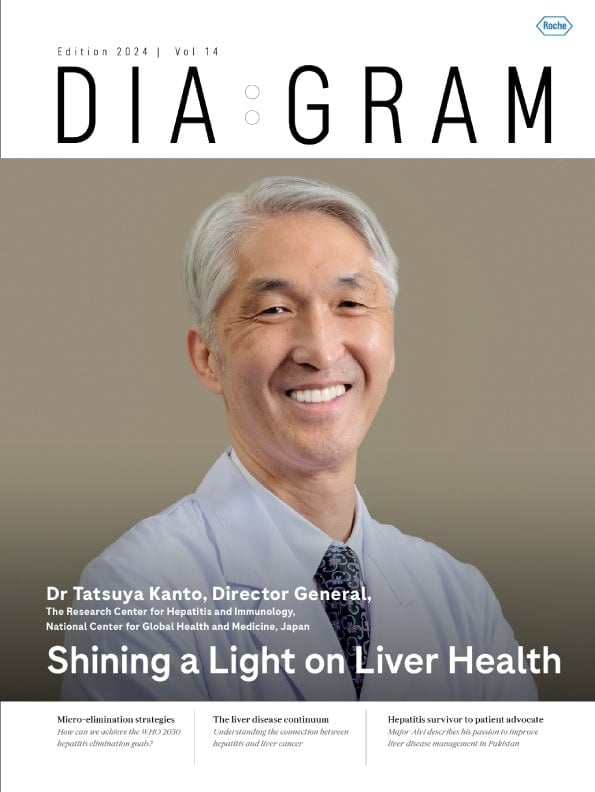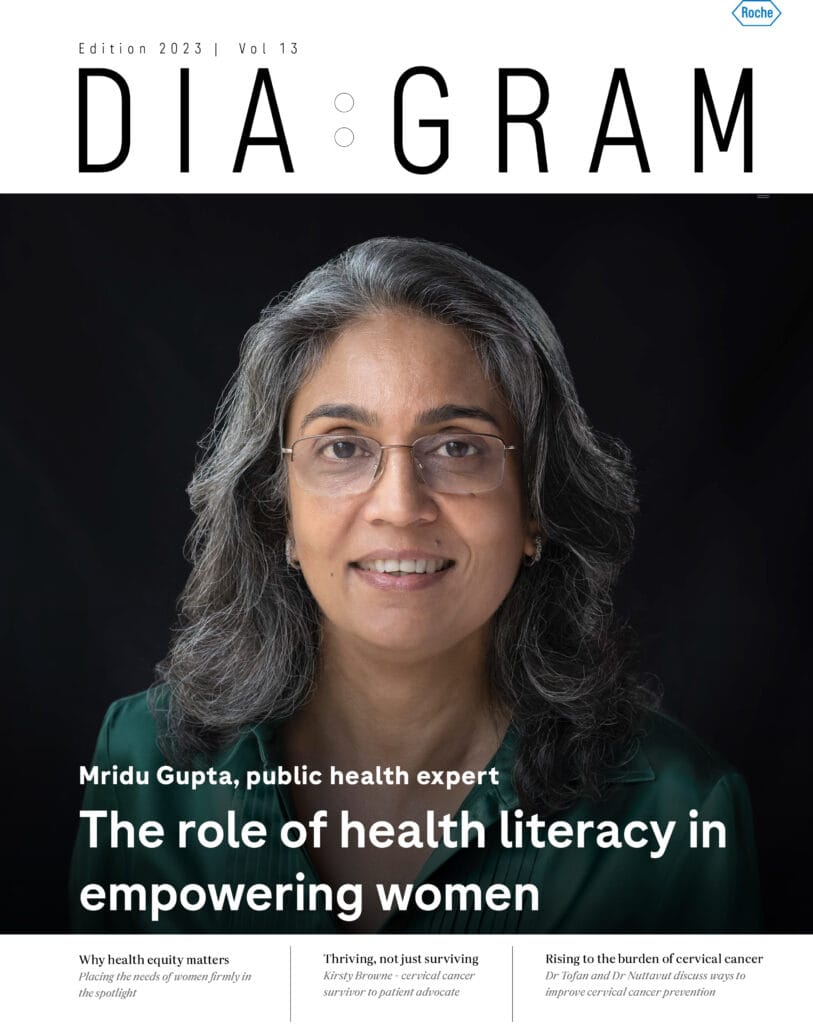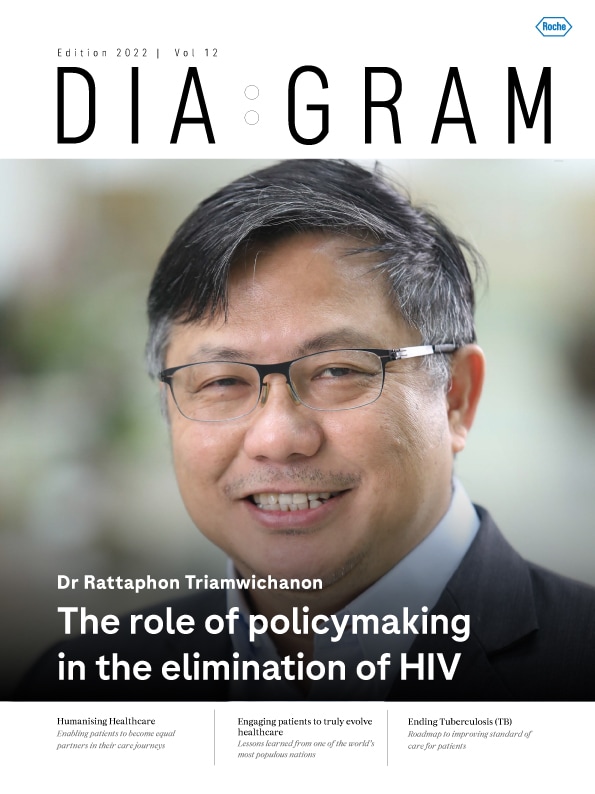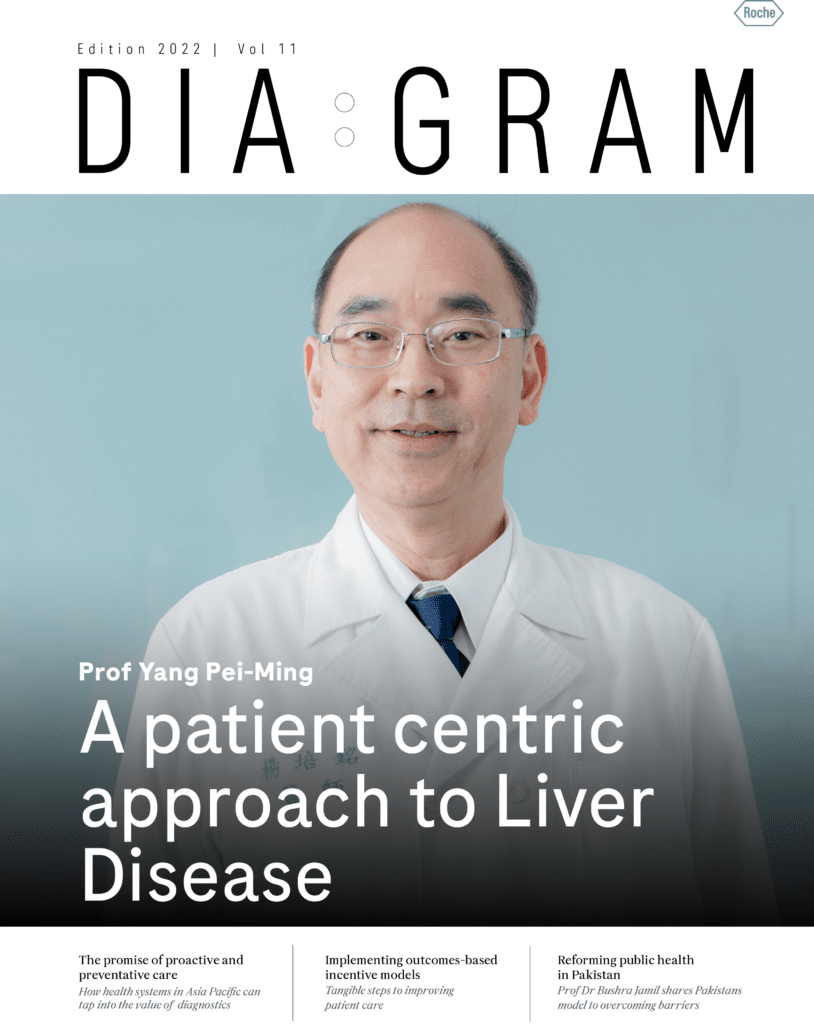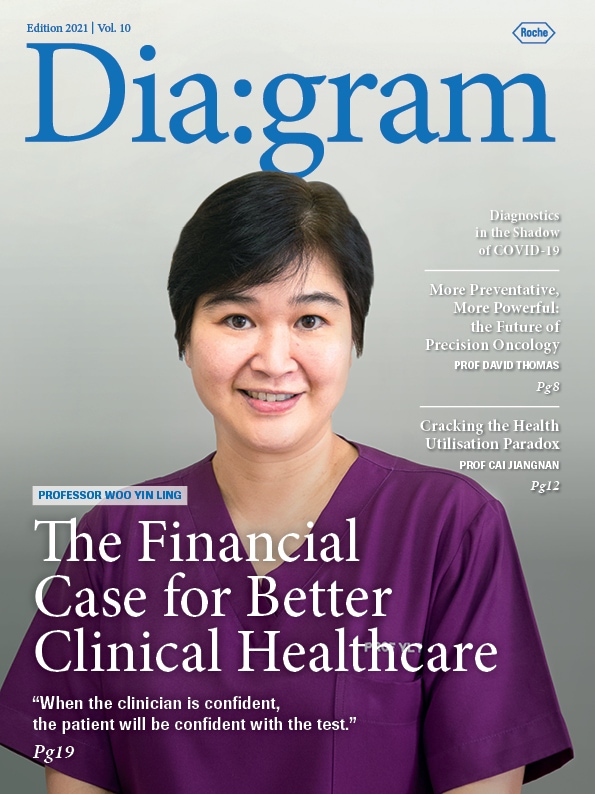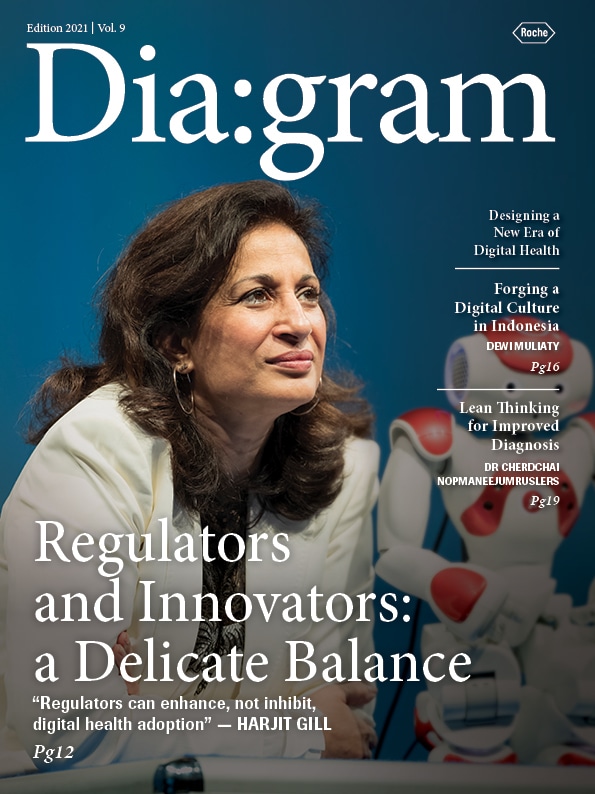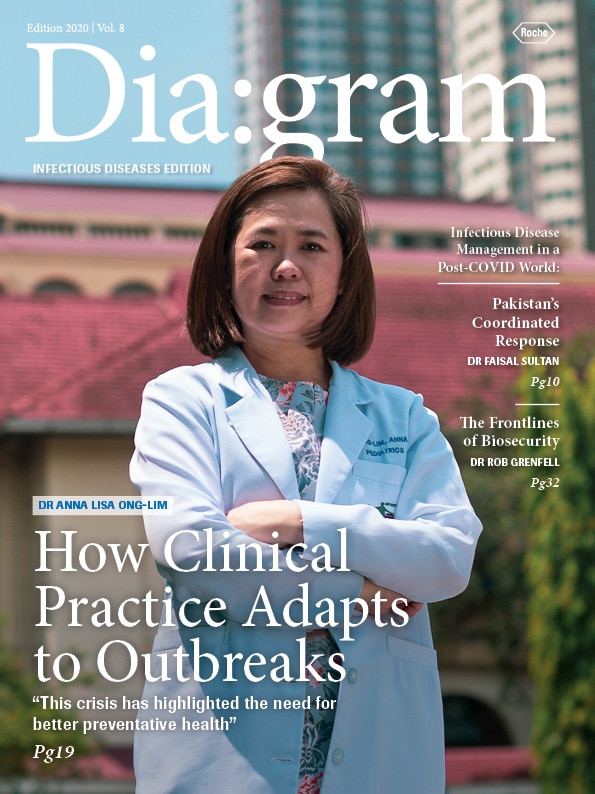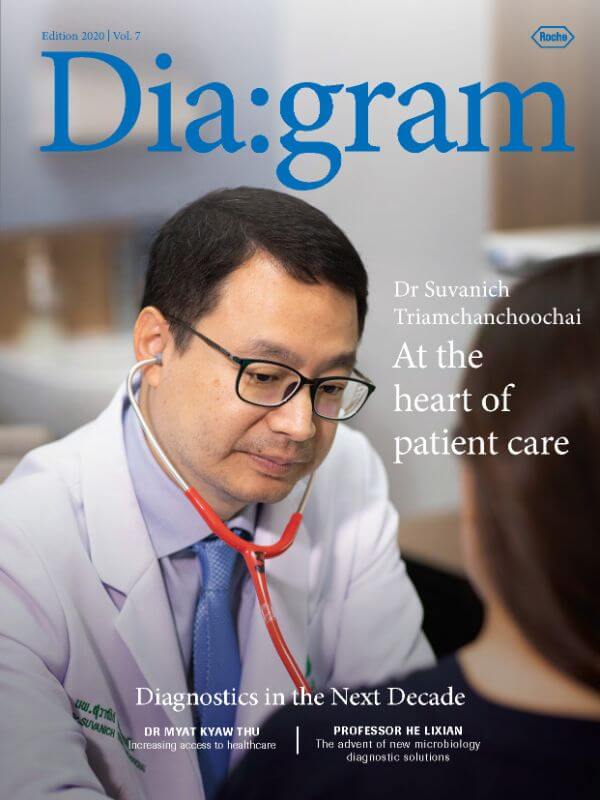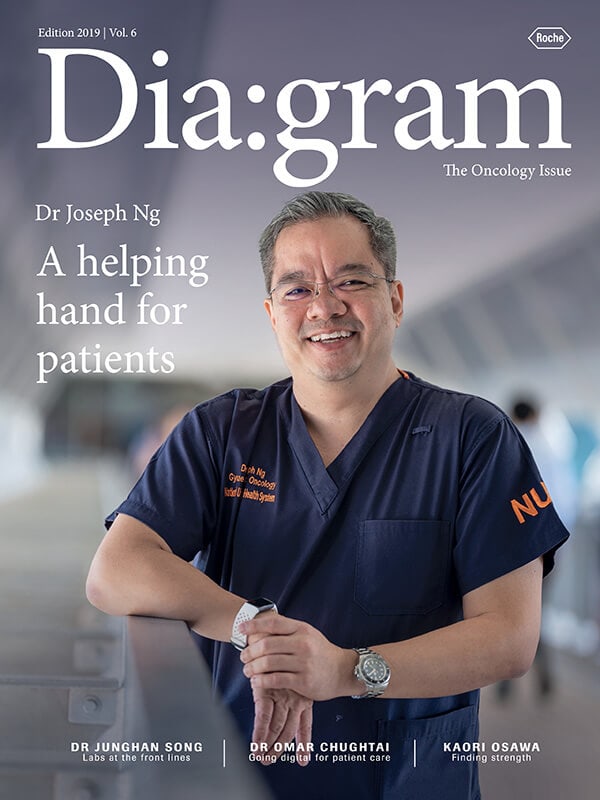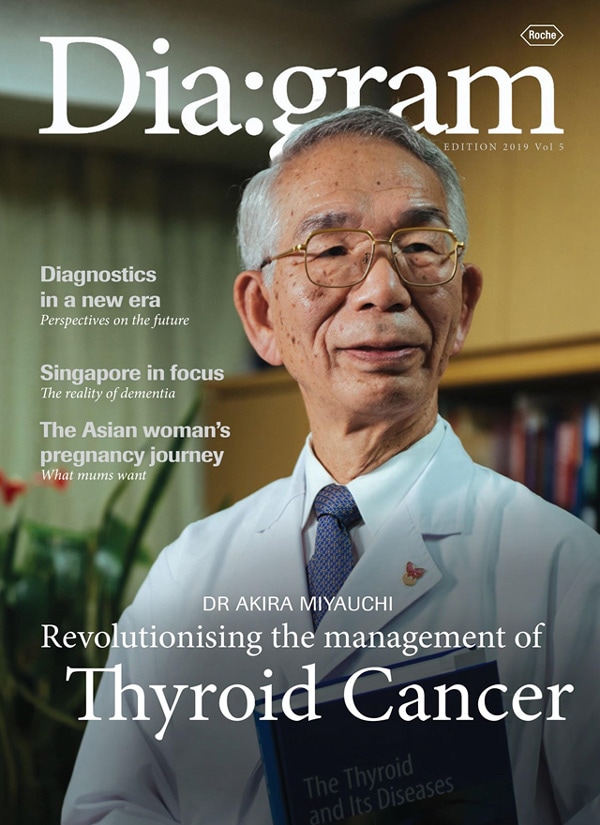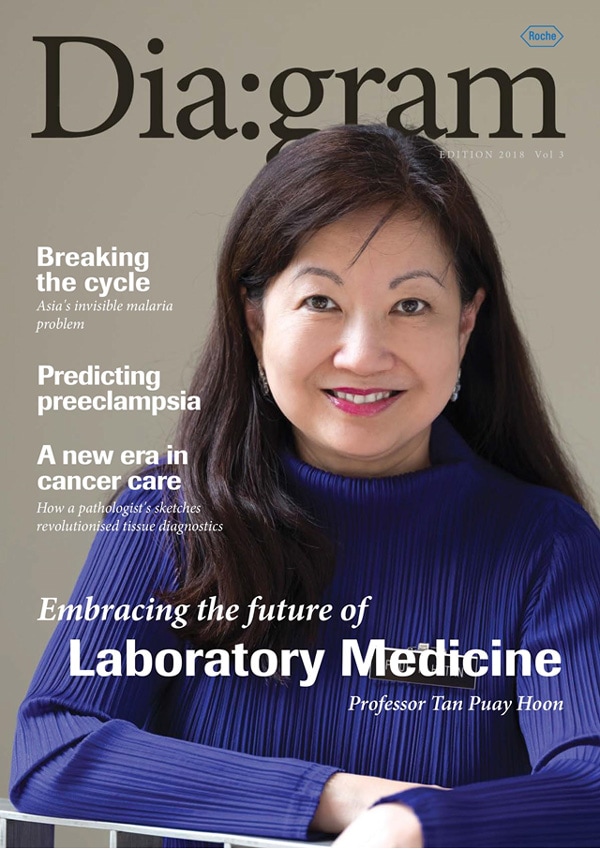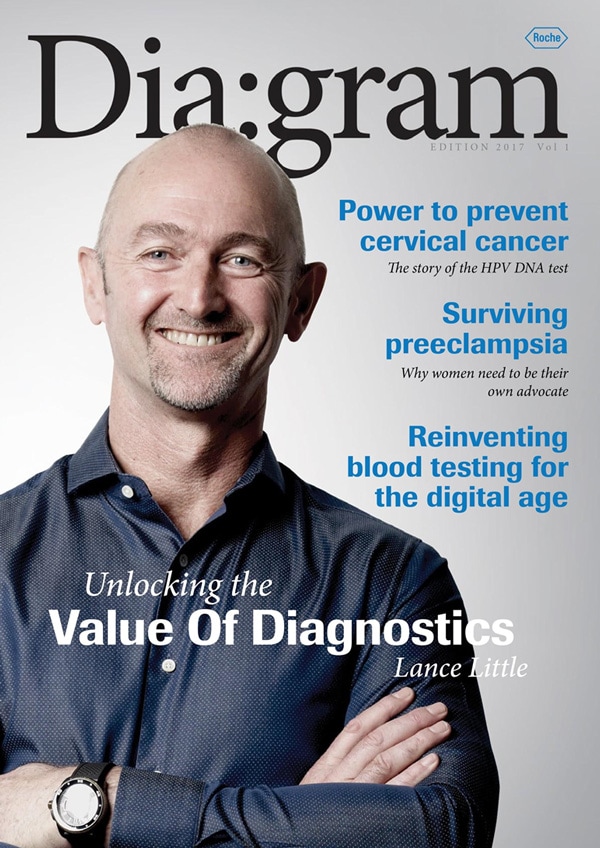Dr Mahboobeh Safaeian is the Director for Clinical Sciences for human papillomavirus (HPV) at Roche Diagnostics. Her work in defining how immunological features contribute to cancer etiology has facilitated changes in dosing for cervical cancer vaccinations throughout the world. Now, Dr Safaeian is focused on accelerating early detection of cervical pre-cancers and cancers. In this exclusive interview with Roche Diagram magazine, Dr Safaeian explains her passion for translating academic research into real-world impact to improve women’s health.
Dr Safaeian’s interest in large-scale disease prevention through vaccination and screening programmes is linked to her belief that each individual life she encounters should be honoured. “I value and respect human life. Being able to help address one of [its] facets – human health – is a very humbling and rewarding opportunity,” Dr Safaeian explains. It was this simple motivation that fueled her research into cervical cancer vaccination during her time at the United States National Cancer Institute (NCI) from 2006 to 2016. Cervical cancer is a major public health problem globally, especially in low resource settings. According to Dr Safaeian, 80% of cervical cancers cases occur in low resource settings where cervical cancer has either the highest or second highest incidence and mortality.
At the time of Dr Safaeian’s research at NCI, three-dose prophylactic HPV vaccines, administered over a six-month period was the recommended standard. However, there are challenges with three-dose regimens.

“Challenges go beyond the price per dose to include programmatic logistics of providing a cold chain and effectively reaching girls and women for subsequent vaccine doses, says Dr Safaeian. She adds that such communities are where “80% of cervical cancer cases happen.”
Dr Safaeian’s research into cervical cancer vaccine doses generated evidence that two cervical cancer vaccine doses, and even one dose, could provide immune protection. Combined with other research in this field,1 Dr Safaeian’s work2 helped to guide the World Health Organization Strategic Advisory Group of Experts (SAGE) in its recommendation to reduce the dosing for the cervical cancer vaccine from three to two.3 These recommendations have since also been adopted by the United States’ Centres for Disease Control and Prevention Advisory Committee on Immunisation Practices4 and the European Medicines Agency.5,6
With this success in primary prevention, Dr Safaeian has now turned her attention to secondary prevention: screening, treatment and the identification of susceptible populations that may benefit from early, novel and/or tailored interventions.
Read more about cervical cancer prevention on Diagram magazine: Taking Control of Cervical Cancer
IMPACT Study
Transient HPV infections are very common, especially at young ages, there is a need for triage tests to determine which HPV-positive individuals need immediate management as opposed to routine screening. This is a major research question and one that Dr Safaeian is now investigating through the Improving Primary Screening and Colposcopy Triage (IMPACT) Study. The study is looking at new ways to identify cervical pre-cancers and cancer earlier, and to monitor infections with HPV that have a high likelihood of progressing to cervical pre-cancer and cancer.
Dr Safaeian spearheads the study as part of the efforts of the Roche Tissues Diagnostics’ Cervical Cancer Solutions team in the United States. More than 200 people are involved in the trial, working across functions such as medical and scientific affairs, as well as clinical operations and biometrics. The study also involved data managers, programmers, regulatory experts, contract research organisation, site investigators and staff, laboratories and their staff, study pathologists, research and development colleagues, system support engineers, and legal and budget administration experts.
With the information from this study, Dr Safaeian hopes that investigators will be able to better understand the ability of the HPV test to identify if a woman has an infection with one or more high-risk HPV genotypes and whether a woman with high-risk HPV infection will develop changes in her cervical cells that are associated with higher risk for cervical cancer.
While Dr Safaeian’s endeavours at NCI in translating research into action were successful overall, she acknowledges the major challenges associated with any implementation. These include accurately establishing the strength of the association of the risk factors with the disease or condition, and finally assessing the feasibility and cost-effectiveness of the research for the various healthcare systems.
Once all these hurdles have been overcome, and all the data has been gathered, it will still take time to change practice patterns and reimbursement policies. As Dr Safaeian puts it, “changing behaviour is a slow and difficult process.”
Decoding large data sets for future predictions
With technology developments such as artificial intelligence (AI) and machine learning increasingly being adopted by the healthcare industry, Dr Safaeian recognises the potential of leveraging such technologies in gathering and disseminating the best data with the scientific community. “Machine learning and AI are exciting tools for the analysis of large and often noisy clinical data set. While these tools are still in development, I hope they will help us get to insights faster so we can intervene early in disease progression, with better prevention or treatment.”
The goal is to make cancer preventable and curable. In the future, machine learning and artificial intelligence can enable early intervention with better and faster data-driven insights.
For more cervical cancer news on Diagram magazine: Making Every Women Count
References:
1D’Addario M, Scott P, Redmond S, Low N. HPV vaccines: systematic review of literature on alternative vaccination schedules. Report to WHO. Institute of Social and Preventive Medicine (ISPM), University of Bern, Bern, Switzerland (24th June 2014). In: Evidence based recommendations on human papilloma virus (HPV) schedules: Background paper for SAGE discussions. Geneva: World Health Organization 2014: Annex 1.
2Safaeian M, Porras C, Pan Y, et al. Durable antibody responses following one dose of the bivalent human papillomavirus L1 virus-like particle vaccine in the Costa Rica vaccine trial. Cancer Prev Res, 2013; 6:1242–1250.
3World Health Organization. Human papillomavirus vaccines: WHO position paper, October 2014.
4Centers for Disease Control and Prevention. Use of a 2-dose schedule for human papillomavirus vaccination – updated recommendations of the advisory committee of immunization practices.
5European Medicines Agency. Gardasil 9 – Summary of product characteristics.
6European Medicines Agency. Cervarix – Summary of product characteristics.

